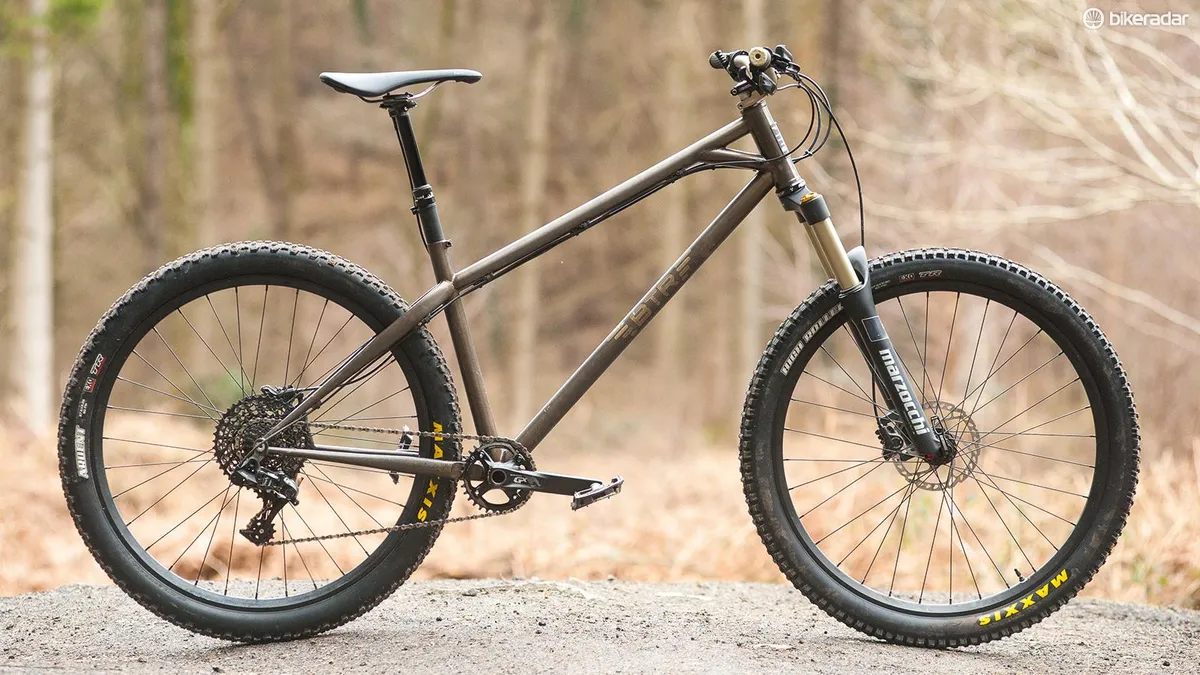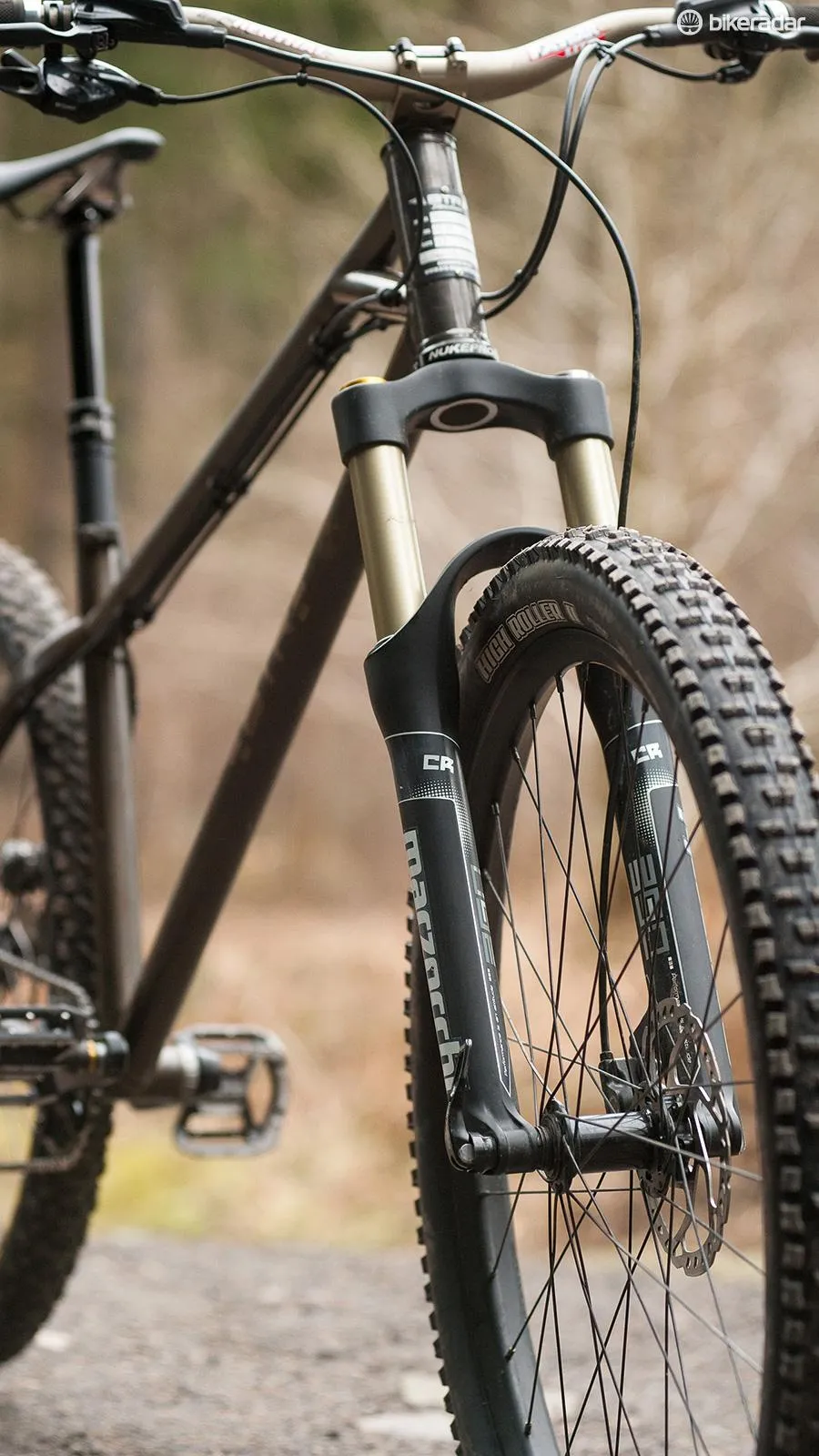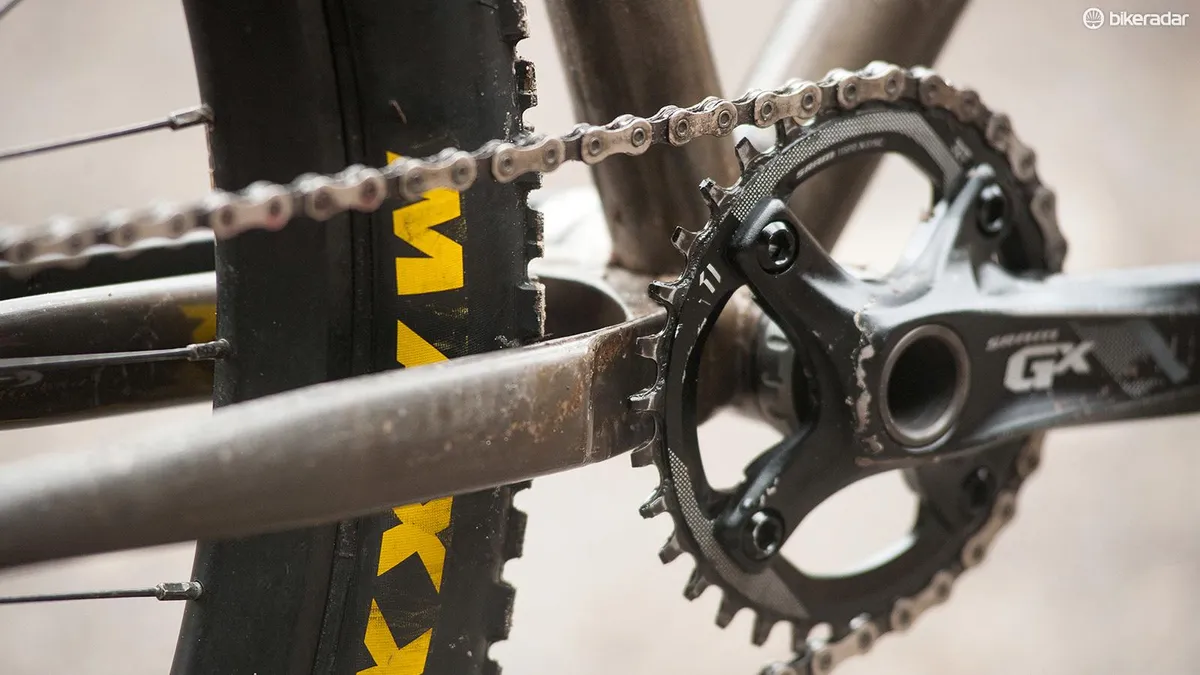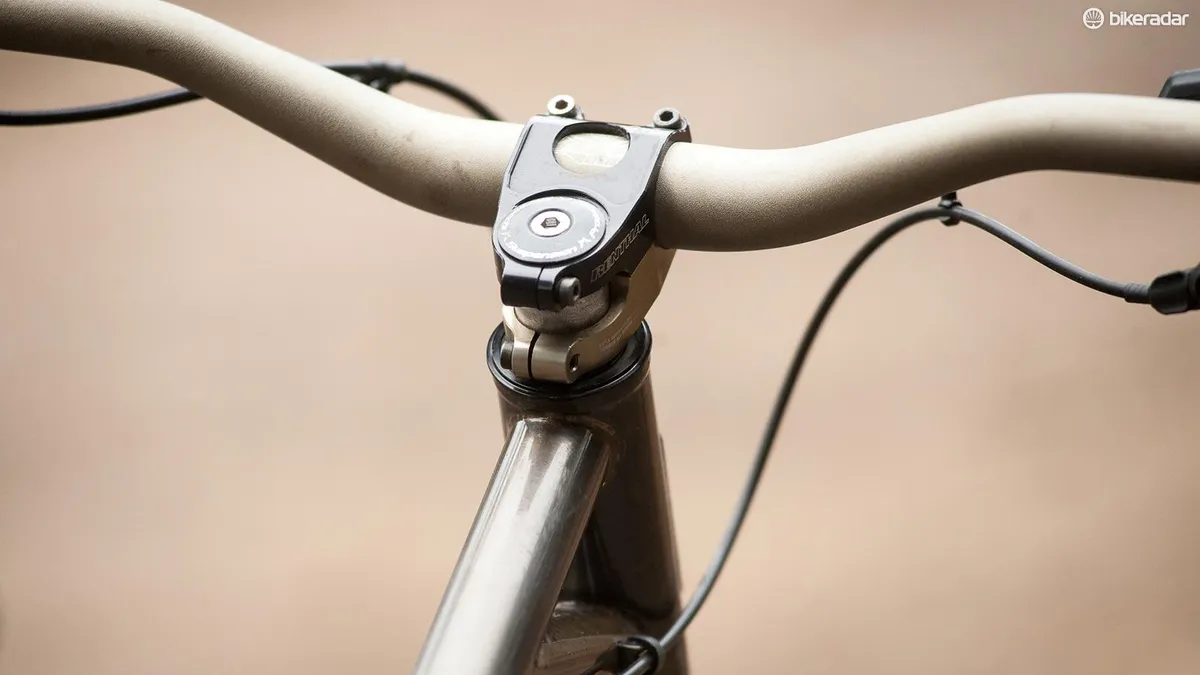You’d be forgiven if you’ve never heard of BTR. Based out of a workshop in England's rural South West, the company consists of two blokes who are involved in each and every step of manufacture, from CAD drawing to tube cutting and welding.
- From Frome with love: BTR Fabrications' custom steel frames
- How long can you go? Jon Woodhouse's extreme geometry hardtail
BTR specialises in steel frames made to suit the sort of riding its founders love, namely a little bit of everything with a focus on hitting the descents as hard as possible.
The Ranger is designed to be just such an all-round bike. It’s made from a mixture of Reynolds 631 and 853 steel with Dedacciai stays, all lovingly TIG welded together. It’s designed to run a 120mm travel fork as that’s what BTR reckons is about the limit before the dynamic changes in geometry when the fork compresses start to really affect how predictably the bike rides.
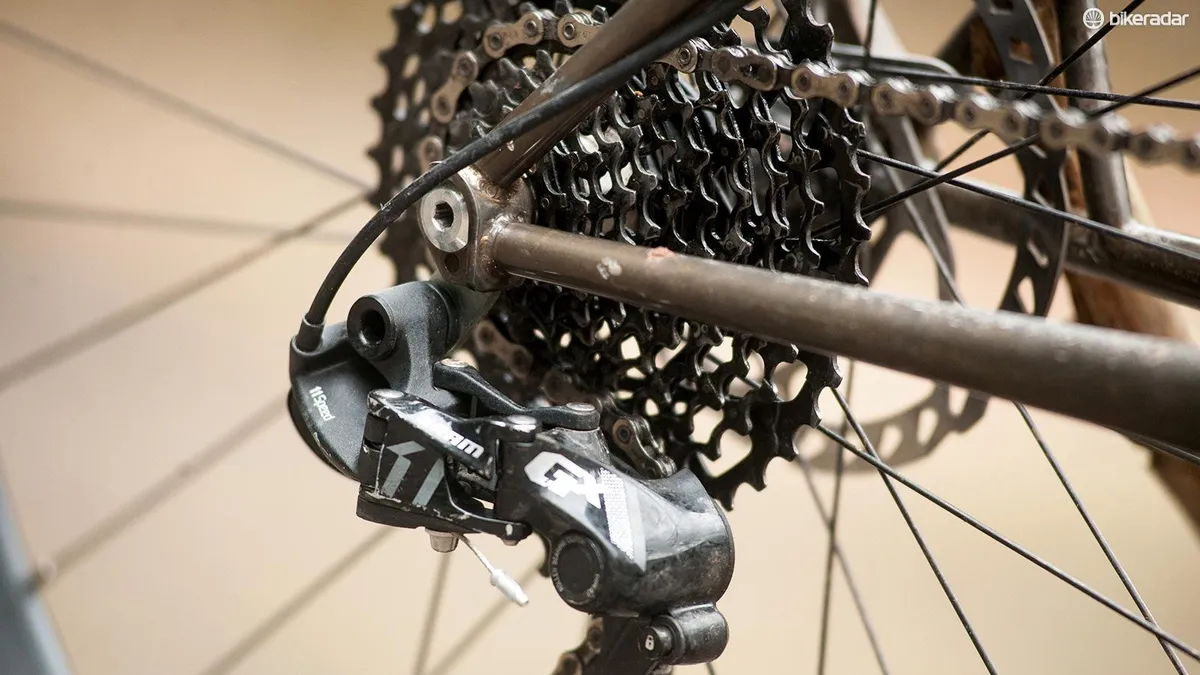
Our test bike rolled on 650b wheels but there is also a 29er version and, if you want to keep it properly old school, a 26in model. The geometry is a balance between a usefully slack 64.5-degree head angle and steep 75-degree seat angle with a respectable, if not hugely long, 445mm reach in a size large.
Pick-and-mix sizing and beautiful details
The 650b and 29er frames come in four sizes from small to extra large, though an extra small model is available in 26in trim. While the geometry is varied across the different wheels, all the 650b models have tight 415mm chainstays, apart from the small frame, which is instead 410mm, helping to keep smaller riders centred on the bike.
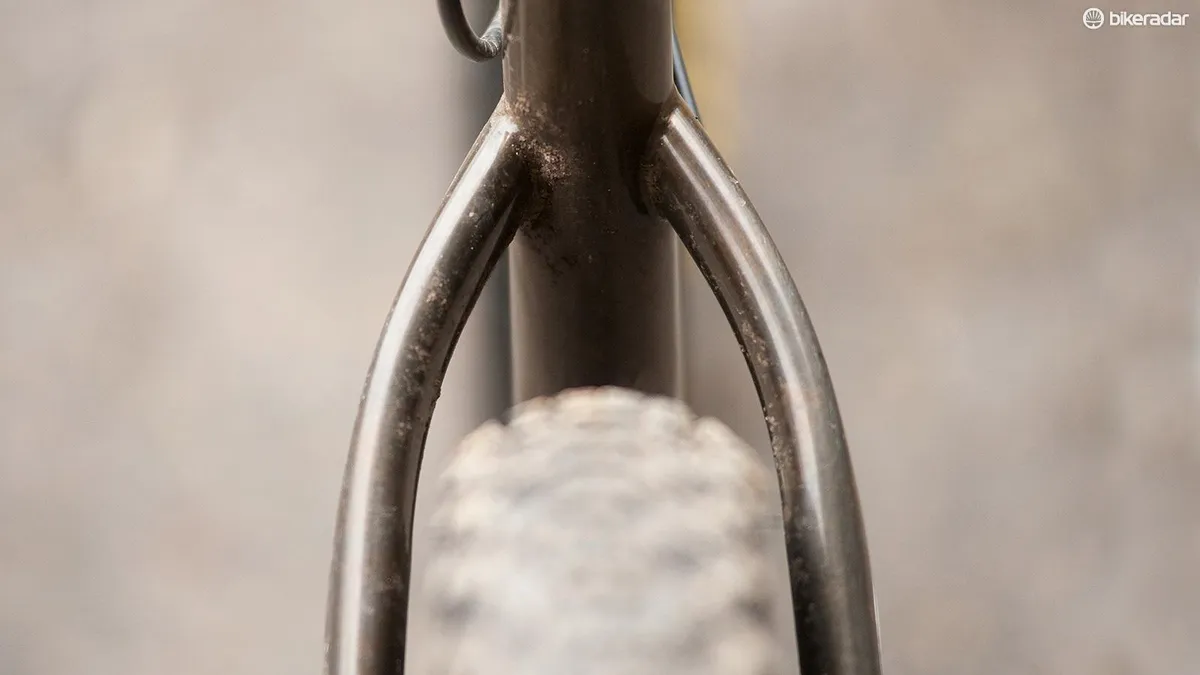
As you’d expect, the frame is beautifully crafted. If neat welding has the power to make you go weak at the knees, then you’ll be wanting some crutches before you inspect the Ranger up close. Tidy fishscale TIG joints join tubing that’s just about skinny enough to let you know it’s no run-of-the-mill alloy machine, without looking anaemic.
There’s some excellent detailing too. While BTR's older frame designs used X-brace gussets at the head tube junction, there’s now a neat tubing brace. According to BTR, it’s an absolute bugger to fit correctly, but they feel that the time invested leads to a much cleaner looking frame that’s just as strong.
You can tell there’s a sense of pride in creating a functional and clean looking design, even if it’s not quite as simple as going about things the usual way
The seatstays aren’t skinny by any means, but they’re unbraced and slightly kinked to introduce a bit of give as well as improving tyre clearance over the old design. On most bikes, the rear brake mount is simply a functional attachment point, but on the Ranger it’s an elegant design that uses the 142x12mm dropout and a seatstay-to-chainstay brace to remove the need for an unsightly chunk of metal.
You can tell there’s a sense of pride in creating a functional and clean looking design, even if it’s not quite as simple as going about things the usual way. The same goes for the optional integrated seat clamp.
The head tube badge is another lovely touch, with all the frame details stamped onto something that’s reminiscent of a registration plate you’d find on some hulking piece of factory machinery. You can even add your own text onto it to make the bike uniquely yours.
Ready-to-attack builds
Though it’s likely that most of the people in the market for a high-end handbuilt frame are likely to go for a fully custom build, BTR is now offering the bike complete with a pick of parts that the team reckon complement the frame.
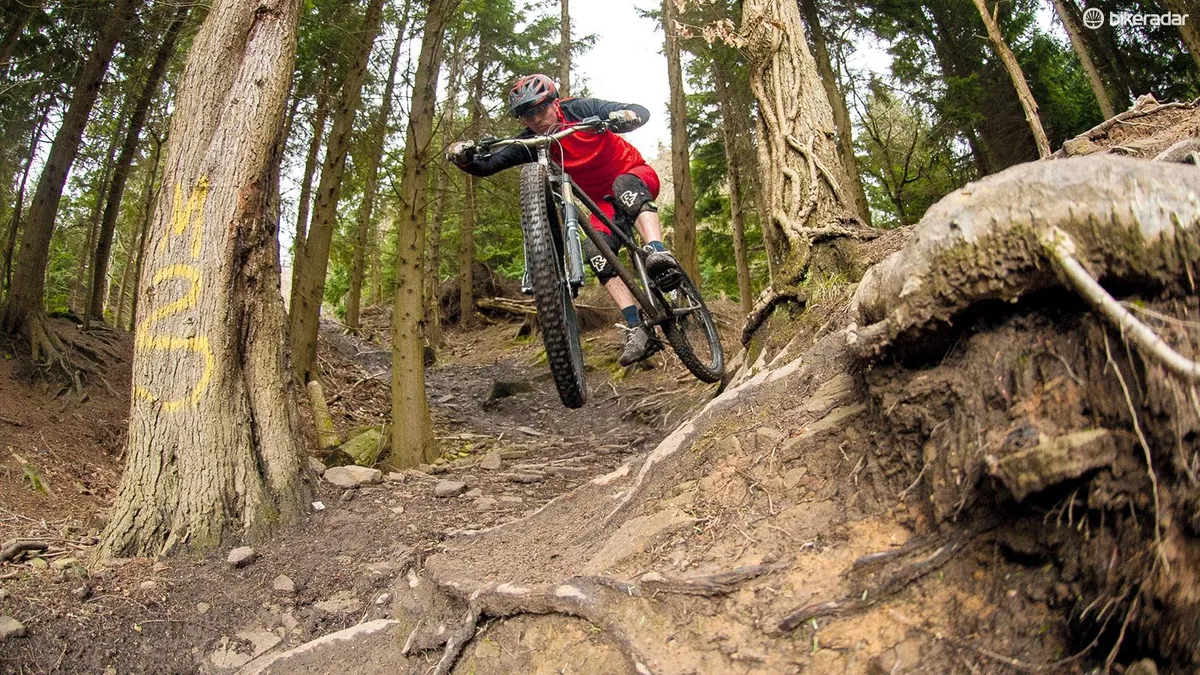
That means a Marzocchi 350CR fork up front, a Renthal cockpit with 740mm bar, Shimano M506 disc brakes and SRAM GX drivetrain. The wheels are handbuilt by August Bicycles and have 28.8mm internal width Ryde Trace Enduro rims paired to August hubs, shod with a Maxxis High Roller II up front and a faster-rolling Ardent at the back. They’re tubeless ready and also use the reinforced EXO casing.
It’s not flashy, big ticket stuff but it works just as well. At 28.2lb/12.8kg without pedals it also means there’s room to drop some weight should you wish to, but even in stock forms it’s robust enough to cope with an absolute battering without being knocked off line.
The Ranger is happy to pop and hop over obstacles, with a dynamic feel that never trips over into nervousness
Clattering down descents at maximum attack is what the bike encourages you to do too. It’s no bendy, traditionally skinny-tubed steel machine, but it certainly feels less violently harsh than a comparable alloy bike.
For all-out descending madness, some might like a bit more reach but it’s a good compromise between involving you in the ride and outright stability. I'm 5ft 8in / 173cm, and felt the 150mm long head tube of the large frame was possibly a touch tall to weight the front wheel without a conscious effort on flatter twisty trails, but that does encourage you to ride the front, especially on steeps.
The slack head angle means it’s utterly competent there too, with the well-damped and supportive fork helping sustain this sensation. It’s happy to pop and hop over obstacles, with a dynamic feel that never trips over into nervousness, and it’s perfectly happy when hauling back uphill too.
It’s hard to avoid the mention of value, as there are a lot of excellent complete bikes you could buy for the price of the Ranger's frame. However, if you value being able to talk directly with the people who will make your bike, discuss every detail or even head down to a small workshop in the British countryside and watch your frame take shape, then it’s likely the Ranger will be right up your street.
It works beautifully as a piece of machinery, rides very well and is tough enough to last a lifetime. But it’s also a work of art that’s liable to make you smile without even having to swing a leg over it.
